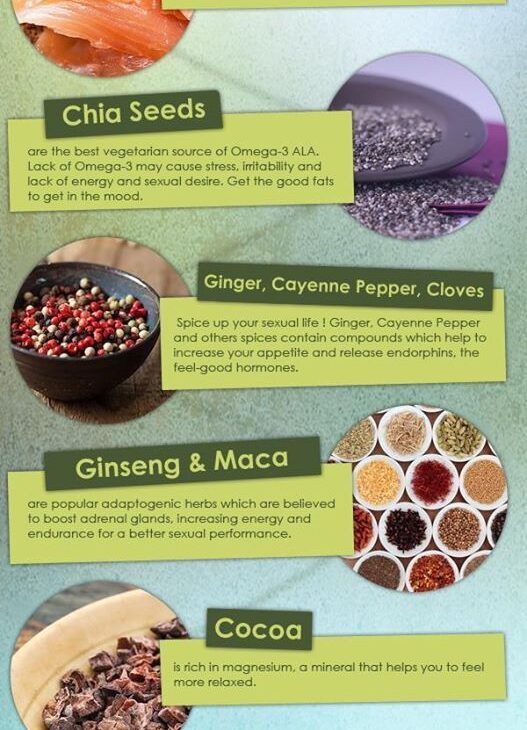Endurance energy is the sustained power your body needs for long-duration activities. It’s essential for athletes and fitness enthusiasts.
Endurance energy is a pivotal aspect of physical fitness, supporting activities that require prolonged effort such as marathon running, long-distance cycling, or extended periods of physical work. Building endurance involves consistent training and a diet rich in nutrients that fuel the body over time.
Boosting this type of energy often requires a balance of carbohydrates, proteins, and fats, alongside sufficient hydration and rest for optimal performance and recovery. Strategies to increase endurance energy include interval training, cross-training, and proper pacing, all designed to enhance the body’s ability to sustain activity for longer periods effectively. Consciously developing endurance helps athletes improve their performance, reduce fatigue, and increase the body’s efficiency in utilizing energy resources.

Credit: www.amazon.com
The Science Behind Endurance Energy
The journey to understanding how our bodies create endurance energy is as exciting as it is complex. Delve into the science that fuels every step, pedal, or stroke during prolonged activities. Here, we look at the intricate systems working tirelessly to power endurance athletes and fitness enthusiasts alike.
Mitochondria And Atp Production
The cells in our body have small ‘powerhouses’ called mitochondria. They turn nutrients from the food we eat into a special energy currency, ATP (adenosine triphosphate). Think of ATP like the fuel in your car; without it, you wouldn’t go far. Our muscles use it to contract and keep us moving.
- ATP production happens in several steps, starting with glycolysis in the cell’s cytoplasm.
- The process finishes in the mitochondria with the Krebs cycle and electron transport chain.
- Different foods contribute to this energy — carbs, fats, and sometimes proteins.
Endurance training can increase both the number and efficiency of mitochondria. This means more energy for longer periods.
Role Of Oxygen In Energy Production
Oxygen’s role in energy production is vital. It takes part in a process called ‘aerobic respiration’. This happens in our mitochondria after glycolysis. With enough oxygen, our bodies create much more ATP from each glucose molecule.
| Without Oxygen | With Oxygen |
|---|---|
| Limited ATP | Up to 15 times more ATP |
| Buildup of lactic acid | More efficient energy use |
As endurance increases, our bodies adapt to use oxygen more effectively. This means less fatigue and better performance.
- During endurance activities, breathing rate increases to take in more oxygen.
- The heart pumps faster, delivering oxygen-rich blood to muscle tissues.
- With consistent training, a body’s oxygen uptake efficiency improves.
Both the mitochondria and oxygen are key players in the long game of endurance. They ensure our bodies keep moving, even when the going gets tough.
Nutrition For Endurance Energy
Nutrition plays a key role in powering endurance activities. Effective endurance energy requires a solid nutrition strategy. This encompasses the right mix of carbohydrates, hydration, and electrolytes.
Carbohydrates For Sustained Fueling
During extended exercises, your body uses carbohydrates as its main energy source. The right carbohydrates help maintain blood glucose levels and replenish glycogen stores.
- Complex carbs provide slow, steady energy.
- Simple carbs give quick energy boosts.
| Type of Carb | Food Sources |
|---|---|
| Complex | Oats, pasta, whole grains |
| Simple | Fruit, honey, sports gels |
Importance Of Hydration
Staying hydrated impacts energy levels and physical performance. Dehydration can lead to fatigue and impaired concentration.
Boldly put, drink water before, during, and after your activity. Sports drinks can also help when sweating heavily.
For optimal hydration:
- Drink even if not thirsty.
- Monitor the color of your urine.
- Use a hydration pack for long sessions.
Electrolytes And Endurance Performance
Electrolytes are minerals that impact muscle function and water balance. They are lost through sweat.
Include electrolytes like sodium and potassium in your nutrition plan. They can prevent cramps and fatigue.
Good electrolyte sources include:
- Salt tablets
- Electrolyte-infused drinks
- Fruits like bananas
Training Strategies To Boost Endurance Energy
Finding the best way to improve endurance energy is key for better performance. It is all about maximizing the body’s potential to keep going. Different strategies can help achieve this. Let’s explore some proven training methods.
Long Slow Distance Training
Long Slow Distance (LSD) training increases stamina. It involves running, swimming, cycling, or walking for long periods at a steady, comfortable pace. This type of training helps your body become more efficient at using energy.
To implement LSD training effectively, consider these tips:
- Choose an activity you enjoy to stay motivated.
- Gradually increase your training duration each week.
- Maintain a consistent pace to avoid fatigue.
Interval Training For Aerobic Capacity
Interval Training enhances aerobic capacity. This means your body can take in and use more oxygen during workouts. It’s a mix of short, high-intensity bursts followed by rest or low activity periods.
A typical interval training session could look like this:
| Activity | Intensity | Duration | Rest |
|---|---|---|---|
| Sprinting | High | 1 minute | 2 minutes |
| Cycling | High | 2 minutes | 3 minutes |
Remember to warm up before starting intervals and cool down after finishing.
Strength Training For Endurance
Strength Training is also crucial for endurance. It builds the muscles needed to perform longer. Focus on compound exercises like squats, deadlifts, and pushups.
- Target major muscle groups to improve overall strength.
- Include rest days to allow for muscle recovery.
- Use proper form to prevent injuries.

Credit: www.netmeds.com
Supplements For Enhancing Endurance Energy
Boosting endurance energy is crucial for athletes and fitness enthusiasts. A proper supplement strategy can enhance performance significantly. Understand how specific supplements can improve your energy and endurance during intense workouts.
Creatine For Atp Regeneration
Creatine is a powerhouse for short bursts of energy. It supports the regeneration of ATP, the energy currency of cells. During exercise, creatine ensures a rapid energy supply.
- Increases maximum power
- Enhances sprint performance
- Improves recovery
Caffeine For Endurance Performance
Caffeine is more than a wake-up call. It’s a powerful stimulant that enhances endurance. It works by reducing the perception of effort, which is why it’s popular among endurance athletes.
| Effect | Benefit |
|---|---|
| Increased alertness | Maintains focus during workouts |
| Reduced fatigue | Allows for longer training sessions |
Beta-alanine For Buffering Lactic Acid
Beta-alanine is essential for exercises lasting one to four minutes. It helps fight off muscle fatigue by buffering lactic acid in muscles.
- Delays muscle exhaustion
- Improves high-intensity exercise performance
- Increases exercise capacity
Mind-body Connection In Endurance Energy
The Mind-Body Connection in Endurance Energy plays a pivotal role in athletic performance. Understanding this connection can transform an athlete’s approach to training and competing. It’s not just about physical strength; the power of the mind is equally crucial. Harnessing mental energy to fuel the body increases stamina, pushing an athlete past perceived limits.
Mental Strategies For Overcoming Fatigue
Exhaustion is a common barrier that every athlete faces. Effective mental strategies help in pushing beyond this challenge:
- Focus on Positive Self-talk: Replace negative thoughts with encouraging affirmations.
- Break Goals into Manageable Chunks: Achieving small milestones keeps motivation high.
- Keep a Steady Breathing Pattern: Controlled breathing supplies a steady flow of oxygen to muscles.
Visualization Techniques For Performance Enhancement
Visualizing success is a technique used by top athletes worldwide. It involves creating a mental image of achieving peak performance:
- Mindful Imagery: Picture crossing the finish line with energy to spare.
- Rehearse Scenarios: Mentally practice different race conditions to be prepared.
- Embrace the Success Feeling: Feel the joy and satisfaction of accomplishment.
Recovery And Rest For Sustainable Endurance Energy
Recovering and resting are key to maintaining your endurance energy. They help your body repair and prepare for the next challenge. Let’s dive into how to optimize these elements to keep your energy levels high.
Importance Of Adequate Sleep
Sleep is your body’s best friend for healing. It’s when you truly recharge. Aim for 7-9 hours each night to let your muscles and mind recover. Your endurance energy depends on this rest.
- Quality sleep boosts performance
- It helps to reduce fatigue
- Restful nights support overall health
Nutrition For Recovery
Eating the right foods after exercise helps your body bounce back. Think proteins, carbs, and healthy fats. Your meals should include:
| Component | Benefits | Food Sources |
|---|---|---|
| Proteins | Repair muscles | Chicken, fish, beans |
| Carbohydrates | Refill energy stores | Whole grains, fruits |
| Fats | Long-term energy | Nuts, avocado |
Active Recovery For Muscle Repair
Don’t just sit still! Light activity can actually help you recover faster. Try easy tasks that get your blood flowing without strain. Examples include:
- Walking at a gentle pace
- Doing light stretches
- Practicing yoga
These activities enhance circulation. They deliver nutrients to muscles for fast healing. And they keep the body flexible.
Common Mistakes That Affect Endurance Energy
Many athletes dream of soaring past the finish line, full of energy. Yet, energy to endure is like a complex puzzle. Miss a piece, and the whole picture changes. When it comes to endurance energy, some errors can trip up even the best. Here are key mistakes to avoid.
Overtraining Syndrome
Training hard boosts performance. But too much pushes your body to a breaking point. Signs include constant tiredness, mood swings, and a drop in performance. It’s not just about sore muscles. It impacts sleep, immunity, and even your heart. Rest days are crucial. They let your body heal and grow stronger.
Ignoring The Need For Periodization
Without periodization, you’re shooting in the dark. This training plan breaks down your regimen into phases. Each phase targets different fitness elements. It’s about smart preparation.
- Base training develops aerobic capacity.
- Intensity phases enhance speed and strength.
- Tapering allows recovery before big events.
Skipping periodization can lead to burnout. Your body needs variety to adapt and improve.
The Role Of Genetics In Endurance Energy
Did you know that your genes can influence how well you perform in endurance sports? It’s not just about training hard. Your DNA plays a key role in determining your endurance capabilities. Understanding this link can help improve your athletic performance.
Genetic Factors Affecting Endurance Performance
Different people show varied abilities in long-distance running, swimming, or cycling. This is partly due to genetic differences. Eager to know which genes are involved? Read on!
- ACTN3: A gene linked to fast-twitch muscle fibers. It impacts how muscles perform during quick, explosive movements.
- ACE: This gene influences blood flow, muscle efficiency, and heart function.
- PPARGC1A: Helps regulate energy metabolism, impacting how muscles use oxygen.
Personalized Training And Nutrition Based On Genetic Markers
Personalized plans? Yes! Your unique genetic makeup can guide your training and diet for better endurance.
| Genetic Marker | Training Adaptation | Nutritional Focus |
|---|---|---|
| ACTN3 | Explosive exercises | Protein-rich diet |
| ACE | Stamina-building workouts | Balanced diet, hydrating fluids |
| PPARGC1A | Oxygen efficiency training | High-energy foods |
Say goodbye to one-size-fits-all programs. Embrace a tailored approach for top-notch results!
Frequently Asked Questions Of Endurance Energy
What Are Endurance Energy Sources?
Endurance energy primarily comes from carbohydrates and fats. During sustained activities, the body breaks down these compounds to fuel muscles. Carbs are used first, but with depletion, fat becomes the main energy source.
How Can I Boost My Endurance Energy?
To boost endurance energy, increase your intake of complex carbohydrates, hydrate properly, and incorporate endurance training. Gradually extending the duration and intensity of workouts can also help build stamina effectively.
What Is The Best Diet For Endurance?
The best diet for endurance athletes focuses on a high-carbohydrate intake, moderate protein, and low to moderate fats. Foods rich in vitamins and minerals that support prolonged activity are essential as well.
Are Supplements Necessary For Endurance?
While not always necessary, supplements like BCAAs, iron, caffeine, and beetroot juice may benefit endurance athletes. They should complement, not replace, a well-balanced diet focusing on whole food sources.
Conclusion
Harnessing enduring energy is key to both athletic perseverance and daily vitality. Remember to balance diet, rest, and exercise for optimal stamina. Implement these strategies to power through challenges with sustained vigor. Take charge of your energy; unlock enduring performance and well-being.
Embrace the journey to unstoppable endurance today.

– is a health enthusiast and blogger who is passionate about sharing his knowledge and experience in the vitamin and supplement industry. With over 5 years of experience in the field, William has developed a keen eye for identifying quality products and separating fact from fiction.
Last modified: May 8, 2024









